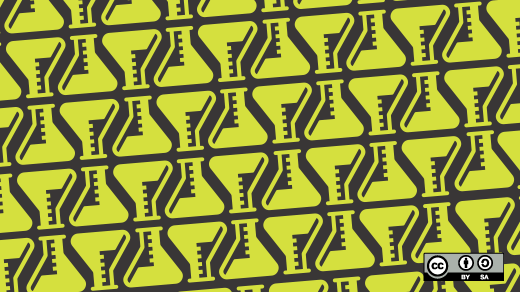Fibrodysplasia ossificans progressiva—more commonly called stone man's syndrome—is the result of a rare mutation, an anomaly in the way certain enzymes called kinases spur protein synthesis. Someone with stone man's syndrome has hyperactive kinases that catalyze more bone production than they should. The body's natural repair mechanisms malfunction, and they replace soft tissue with deposits of solid bone. Joints freeze. The body becomes a prison.
But scientists know they can manipulate those kinases to combat the disease. And chemical biologists at the University of North Carolina are leading an open source effort to unlock the secrets of kinase activity—secrets they say could pioneer a new generation of drug discovery.
Kinases are fruitful sites for biochemical innovation because they're involved in all kinds of biological processes. But here's the problem: The human genome specifies approximately 500 kinases, and 400 of them are still scientific mysteries. That's a staggering number of black boxes, especially considering the fact that scientists believe kinase research can generate insights into so many difficult medical problems, including cancer development and treatment.
Tim Willson and Bill Zuercher admit that the task of mapping all 500 kinases is a daunting one. That's why they're open sourcing it.
"It's like exploring and opening up the West," Willson says. "Everyone suspected there was something interesting out there, but until somebody went out there and built a map, people just didn't know where to build the railroads, or a new settlement. The pioneers had to go explore for the good of everyone, and bring that knowledge back to share with everyone."
Willson and Zuercher are members of the Structural Genomics Consortium (SGC), a coalition of scientists dedicated to understanding the intricacies of the human genome, which includes kinase activity. Together with five other academic institutions across the globe, SCG-UNC hopes to spearhead drug innovations the open source way.
"The reality is that it's such a big task," Willson says. "The only way we think it can be done is through a community effort."
Mapping the more than 400 understudied kinases would be an extraordinary endeavor for any single group of scientists working in relative isolation, Willson and Zuercher say. By sharing their data, they hope to expedite the process.
"Right now, everyone just operates independently of each other," Willson explains. "We're trying to annotate these kinases. And if we can have all that annotation freely shared, it's going to create opportunities for investigators to collaborate with each other, and for foundations interested in certain diseases to see what investigators are doing. The hope is that we can pull the pieces together so there's more output from our community than there would be if everyone were just writing up individual grant proposals."
Open sourcing kinase data works in at least two ways. After scientists expose kinases to certain "chemical probes", they release the results of those interactions so others can confirm them. But they also release the specific makeup of those probes themselves, in the hope that drug companies can use the data to build more targeted, effective kinase manipulators.
The result, thanks to SGC's decision not to patent discoveries, is a kind of genomic commons.
"We're expanding the precompetitive space with our understanding of kinases," Zuercher says, "so that anyone who wants to—a pharmaceutical company, a biotech company—can draw on that knowledge."
Willson likens the work to open source software production—specifically the ongoing work of maintaining the Linux kernel.
"We need a community to build a map of what kinases do in biology," he says. "It has to be a community-generated map to get the richness and detail we need to be able to move some of these kinases into drug facilities. But we're just doing the source code. Until someone puts the source code out there and makes it available to everybody, people won't have anything to modify."
Willson and Zuercher say scientists have been interested in kinase activity for years—particularly since the successful mapping of the human genome more than a decade ago—but the pace of progress has been frustrating, they say. Funding agencies prefer to support projects that build on tested and proven results, not research that claims to study unknowns.
"We've known for more than a decade that people have more than 500 kinases, and people know they're rich targets for drug discovery," Willson says, "but everyone is still studying the 50 or so kinases they were before the mapping of the genome. The conventional approach to this is that if you wanted to fund research of a kinase, you have to write a grant proposal, and that proposal is judged based on what you already know about that kinase."
Zuercher calls the situation "a vicious circle that keeps us looking under the street light," learning more about what's already evident—not discovering something new.
"If we want to break out of that circle, we've got to do something fundamentally different," he says. "Unanticipated connections are the real drivers of science. So we're trying to create an environment that favors those unanticipated connections by having tools commonly available."
That's why an open source approach to kinase research is so important, Willson and Zuercher say: New discoveries require new strategies for conducting research.
"We're trying to change the way we approach this," Zuercher says. "It's going to have to be something the community does. We can only create the environment for it. You don't control the community—ever. But how do you help the community to solve this problem?"
For their part, Willson and Zuercher have made substantial contributions to their would-be genomic commons. While working for GlaxoSmithKline, for example, they released more than 300 kinase inhibitors and published the chemical structures and kinase data on the probes. According to Willson, theirs was the largest public-domain kinase data set in history, and the only one that made probes accessible to a community for others' research.
Challenges remain—but those challenges aren't necessarily scientific. Instead, Willson and Zuercher say, the challenges are infrastructural.
"We have a good grip on the basic scientific infrastructure—how to make a probe, how to generate the kinase data," Willson says. "But we're trying to figure out how to do the infrastructure for the communications. How do we share information? How do we capture it? That's the next piece of the puzzle."
And that's where open source software communities have been an inspiration, Willson and Zuercher says. Those communities serve as models for effectively coordinating action across the globe, for collaborating on problems no single person or team could ever hope to solve alone.
"Missed opportunity. Missed potential. That's what keeps us up at night," Zuercher says. "That's why we're really advocates of this open system we're putting forth."
Cracking the kinase problem requires cracking the community problem. But if they can do it, Willson and Zuercher say the results could be magnificent.
"That's what keeps us going—the potential impact we can have," Zuercher says. "We know there's gold buried in these 400 or so kinases. We just have to look for it. And we think that this is the best way to do that—really get the community involved."







1 Comment